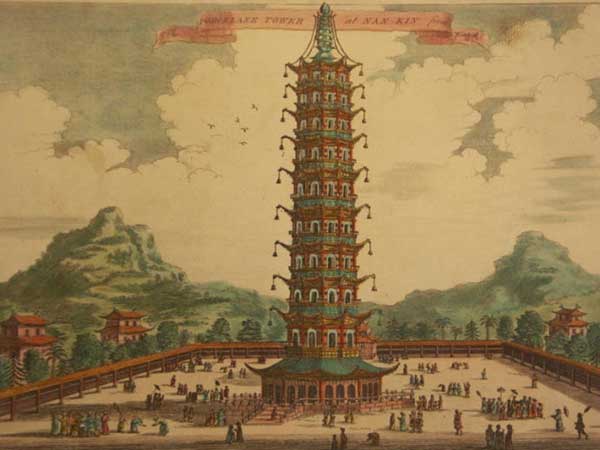 |
|
A copperplate printing by foreign artists of the Da Bao En Temple built by Zheng He on the orders of Emperor Yongle.[Photo provided to China Daily]
|
And for those who have read enough about the evils of the Ming eunuchs, spending a few minutes inside the dark main hall of the Fahai Temple, where the frescoes are housed, may open another window.
Lu Shaojie is a volunteer tour guide at the Fahai Temple. She calls Li Tong "Li Da Ren", or My Lord Li, out of respect.
"Collectively, history - official and unofficial - has long painted the Ming eunuchs as a highly corrupt and greedy group, capable of not much except endless manipulation and incrimination," she says. "Many even blame them for the fall of the Ming Dynasty 276 years after its founding in 1644. People have long argued that although Li built the Fahai Temple, ostensibly to show his indebtedness to Emperor Yingzong (1427-1464), the third Ming Emperor he served, the eunuch had his own agenda, as his tomb sits just a few hundred meters away down the slope, in the temple's southwest.
"However, the copious religious messages of this space assure me that Li was not merely concerned with saying a heartfelt thank you, or with his own afterlife," says Lu, 55, who these days regularly parks his car right beside Li's tomb, composed mainly of a gravestone with inscriptions that amount to a brief summary of the tomb owner's life.
"This man had Buddha in his heart."


























 Raymond Zhou:
Raymond Zhou: Pauline D Loh:
Pauline D Loh: Hot Pot
Hot Pot Eco China
Eco China China Dream
China Dream China Face
China Face






